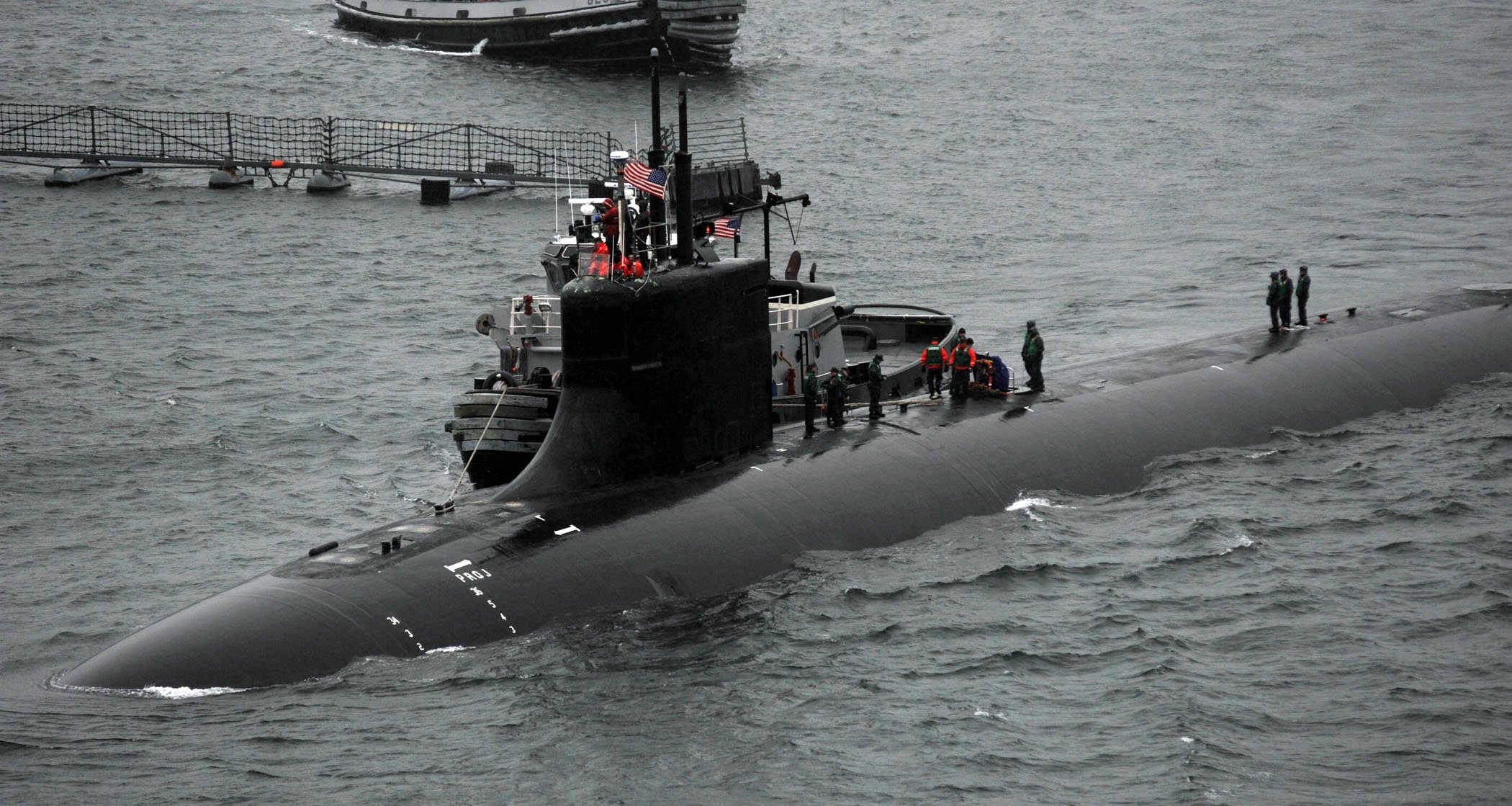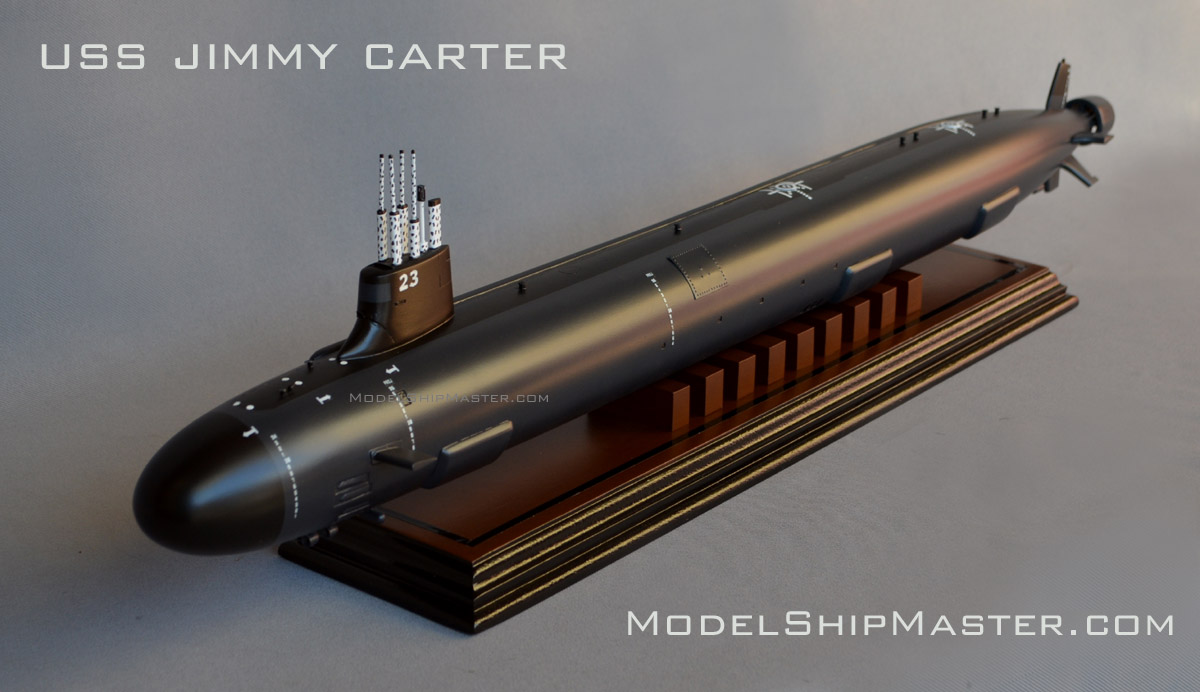Jimmy Carter Submarine - USS Jimmy Carter (SSN-23) is the third and final Seawolf-class nuclear-powered fast attack submarine in the United States Navy. Commissioned in 2005, it is named after the 39th President of the United States, Jimmy Carter, the only submarine to qualify.
The only submarine named after a living president, the Jimmy Carter is also one of the few ships and only the third US Navy submarine to be named after a living person. Heavily modified from the original design of its class, it is sometimes described as a subclass unto itself.
Jimmy Carter Submarine

The contract to build the Jimmy Carter was awarded on June 29, 1996 to the Electric Boat Division of General Dynamics Corporation of Groton, Connecticut, and her keel was delivered on December 5, 1998. or by the beginning of the year 2002.
Uss Jimmy Carter Hi Res Stock Photography And Images
During the modification, her hull was lengthened by 100 feet (30 m) to create a 2,500 ton additional center section that forms the Multi Mission Platform (MMP). This section is equipped with a sea interface for divers, remotely operated vehicles (ROVs) and special operating equipment. An ROV handling system for mission systems, storage and deployment areas, and pressure-resistant passages between the fore and aft of the submarine to accommodate the ship's crew.
Jimmy Carter was christened on June 5, 2004, and the ship's sponsor was former First Lady Rosalyn Carter. One result of the changes was that Jimmy Carter was commissioned more than six years after USS Connecticut and about four months after the launch of the first Virginia-class submarine, USS Virginia.
The Jimmy Carter has additional maneuvering devices mounted fore and aft that allow it to maintain position on selected targets in odd directions. Intelligence experts speculate that the MMP mission could find use as an underwater splice chamber for fiber optic cables.
On November 19, 2004, Jimmy Carter completed the Alpha sea trial, his first operational sea voyage. On December 22, Electric Boat delivered Jimmy Carter to the United States Navy and was commissioned by NSB New London on February 19, 2005.
H I Sutton
On October 14, 2005, Jimmy Carter began transit from NSB New London to her new homeport at the Bangor Annex of Naval Base Kitsap, Washington, but was forced to turn back when an unusually high wave damaged the submarine while underway. The damage was repaired and Jimmy Carter departed New London the next day, arriving in Bangor on the afternoon of November 9, 2005.
In April and September 2017, Jimmy Carter twice flew the Jolly Roger back to its home port at Naval Base Kitsap-Bangor, which traditionally indicates a successful mission. Home US Navy - Ships US Navy - Air Unit USMC - Air Force International Navy Weapon system Special news
Former First Lady Rosalyn Carter breaks open a bottle of champagne aboard the USS Jimmy Carter (SSN-23).

USS Jimmy Carter (SSN 23) is the third and final Seawolf-class nuclear-powered fast attack submarine in the United States Navy. Commissioned in 2005, it is named after the 39th President of the United States, Jimmy Carter, the only submarine to qualify. The only submarine to be named after a living president, the Jimmy Carter is also one of the few ships and only the third US Navy submarine to be named for a living person. Heavily modified from the original design of its class, it is sometimes described as a subclass unto itself.
Us Nuclear Sub Returns Flying Pirate Flag, Sparking Speculation
The contract to build the Jimmy Carter was awarded on June 29, 1996 to the Electric Boat Division of General Dynamics Corporation of Groton, Connecticut, and the keel was laid on December 5, 1998. Jimmy Carter was asked to implement the original plan in late 2001. or early 2002. The electric boat won an $887 million contract from Jimmy Carter on December 10, 1999 to modify the boat to test new undersea systems and covert missions previously carried out by USS Park. During the modification, her hull was lengthened by 100 feet (30 m) to create an additional 2,500 ton center section that forms the Multi Mission Platform (MMP). This section is equipped with a sea interface for divers, remotely operated vehicles (ROVs) and special operating equipment. An ROV handling system to house the ship's crew, a storage and deployment compartment for mission systems, and pressure-resistant passages between the front and rear of the submersible.
Jimmy Carter was christened on June 5, 2004, and the ship's sponsor was former First Lady Rosalyn Carter. One result of the changes was that Jimmy Carter was commissioned more than six years after USS Connecticut and about four months after the launch of the first Virginia-class submarine, USS Virginia.
Jimmy Carter has additional maneuvering devices that allow him to maintain position on selected targets in separate streams. Intelligence experts speculate that the MMP mission could find use as an underwater splice chamber for fiber optic cables.
On November 19, 2004, Jimmy Carter completed the Alpha Sea Trial, his first open ocean voyage. On December 22, Electric Boat delivered Jimmy Carter to the United States Navy and was commissioned by NSB New London on February 19, 2005.
Arctic Submarine Base Reopens To Help Us
On October 14, 2005, Jimmy Carter began transit from NSB New London to her new homeport at the Bangor Annex of Naval Base Kitsap, Washington, but was forced to turn back when an unusually high wave damaged the submarine while underway. The damage was repaired and Jimmy Carter departed New London the next day, arriving in Bangor on the afternoon of November 9, 2005.
In April and September 2017, Jimmy Carter twice flew the Jolly Roger back to its home port at Naval Base Kitsap-Bangor, which traditionally indicates a successful mission.
James R. "Jimmy" Carter, Jr.: James R. "Jimmy" Carter, Jr. (born October 1, 1924) is an American politician and member of the Democratic Party who served as the 39th President of the United States from 1977 to 1981. And in 2002 he was awarded the Nobel Peace Prize Raised in rural Georgia, Carter was a peanut farmer, served as a Georgia state senator from 1971 to 1975, and as a Georgia governor. He was elected president in 1976, promising truth in government after the Watergate scandal in 1971. During Carter's tenure as president, he created two new cabinet-level departments: the Department of Energy and the Department of Education. He enacted a national energy policy that included conservation, price controls and new technologies. David Accords of the Carter camp in foreign affairs promoted the second round of the Panama Canal Treaty, Strategic Arms Limitation Talks (SALT II), and returned the Panama Canal Zone to Panama. On the economic front, he faced persistent "stagflation", a combination of high inflation, high unemployment and slow growth. The end of his presidency was marked by the Iran hostage crisis of 1979–1981, the energy crisis of 1979, the nuclear accident at Three Mile Island, and the Soviet invasion of Afghanistan. In response to Soviet initiatives, he ended détente, extended the Cold War, and staged an international boycott of the 1980 Summer Olympics in Moscow. By the 1980s, Carter's popularity had declined. He survived Ted Kennedy's primary challenge for the Democratic Party nomination in the 1980 election. In the general election, he lost a Republican landslide to Ronald Reagan. After leaving the White House, Carter was very active. In 1982, he founded the Carter Center for Human Rights Advocacy. He has traveled extensively to conduct peace talks, observe elections, and diagnose and eradicate diseases in developing countries. Carter is a prominent figure at Habitat for Humanity and has been highly critical of Israel's role in the Israeli-Palestinian conflict. Naval Career: James R. (Jimmy) Carter, Jr. Carter grew up in a rural environment and attended public school He graduated from Plains High School in 1941 and attended American Southwestern College in Georgia. After a year there, Carter transferred to the Georgia Institute of Technology to study mathematics for a year to qualify for the United States Naval Academy. In 1943, Carter accepted an appointment at the academy and became a member of the class of 1947. After completing an accelerated wartime program, he graduated with honors on June 5, 1946, and was assigned a commission. was appointed as After graduation, Carter was stationed in Norfolk and assigned to the USS Wyoming (E-AG 17), an old warship that had been converted into a floating laboratory for testing new electronics and weapons. Carter served as a radar officer and CIC officer in Wyoming. When Wyoming was decommissioned on 23 July 1947, she was reassigned to another battleship on the same day.

Jimmy carter presidential coin, carter submarine, jimmy carter charity, hampton inn jimmy carter, jimmy carter, jimmy carter blvd apartments, jimmy carter furniture stores, uss jimmy carter submarine, jimmy carter submarine commander, apartments on jimmy carter, submarine jimmy carter, jimmy carter center
0 Comments